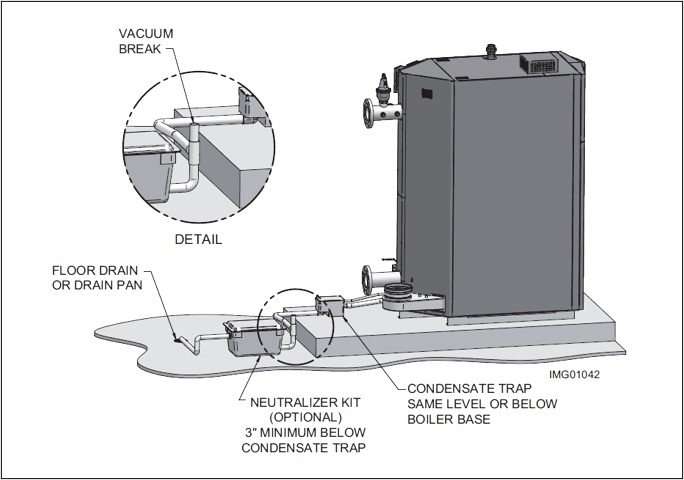Boiler Installation Pitfalls Part 5: More Dos and Don'ts
/So far in this series, we've covered condensing/non-condensing boilers and the design and selection of boiler venting, gas piping, and hydronic piping. In this blog, we discuss many of the remaining installation "dos and don'ts" that also impact the longevity of a boiler system.
DO use the onboard control system that most manufacturers now include with their boilers. No one, not even the controls contractor, understands how to stage, modulate or optimize boilers as well as the manufacturer. These days, onboard boiler controls can control On/Off operation, modulation and sequencing, primary boiler pump speed, and even outdoor temperature reset.
Remember, boiler control can still be integrated into the Building Management System (BMS) for remote monitoring and communicating alarms, however operational control conforms to manufacturer protocol for both condensing and non-condensing boilers and primary pumps.
DON'T power the primary boiler pump(s) through the boiler(s) if the required pump motor amperage exceeds the amperage rating of the associated boiler pump motor relay. This will cause you to blow a fuse in the boiler and the pump will lose power. The best way to avoid this common scenario is to add an external contact to provide electricity to the pump.
DO consult local jurisdiction requirements for Emergency Stop Wiring to determine how many and where these Emergency Stop devices should be installed. Most states require ASME CSD-1 controls and safety devices for automatically fired boilers, in particular, an emergency boiler "STOP" switch at every entrance to the boiler room. This Emergency Stop is usually placed inside the boiler room so that in the event of any emergency you can hit it on your way out of the room, thus disabling the equipment. Activation of the remote shutdown switch or circuit breaker will immediately shut off the fuel or energy supply. Make sure to consult any local codes to see if they have additional requirements.
This is what happens when you replace a non-condensing boiler with a condensing boiler, but neglect to change the venting material.
DON'T use venting material that was installed for existing non-condensing boilers for newly installed condensing boilers. As we covered in Part 2, condensing boilers require either Category II or IV vent, depending on whether the draft is natural or pressurized. The sizing of the vent may also be different for a condensing boiler.
DO consult with a venting expert to specify an engineered vent system for gas-fired boilers.
Magnetite build-up inside pump.
Magnetic filter that should be used to avoid magnetite build-up.
DON'T expose boiler pumps to magnetite (the sludge that leaches from piping and equipment) when using pumps with electrically commutated motors (ECM), which use a magnet to make the impeller spin instead of the shaft. The magnet attracts this metallic material, causing it to build up inside the pump, leading to premature failure.
DO install a magnetic filter like the BoilerMag XT to protect ECM pumps that use a magnet to attach the impeller. This link includes an excellent animation that shows why this type of filter is needed and how simple it is to install and maintain.
DON'T discharge condensate from a condensing boiler directly into a drain. This condensate is highly corrosive to pipes and equipment due to its low pH and must be neutralized before disposal.
DO pipe condensate to a neutralization kit to raise the pH before it is discharged into a drain. The condensate should be able to drain by gravity from the boiler through the condensate trap and finally the neutralization kit before going down the drain. Make sure the boiler is installed at a higher elevation to permit this drainage, otherwise, you will need to install a small condensate pump to facilitate drainage.
Always install a neutralizer kit to prevent boiler condensate from damaging drainage piping.
DON'T overlook local codes or assume one jurisdiction has the same requirements as the last project you designed. Local jurisdictions vary in terms of required boiler clearances, gas venting, safety measures, and more.
DO remember that is much easier to meet code requirements during installation, rather than "fixing" code violations after the installation is complete.







